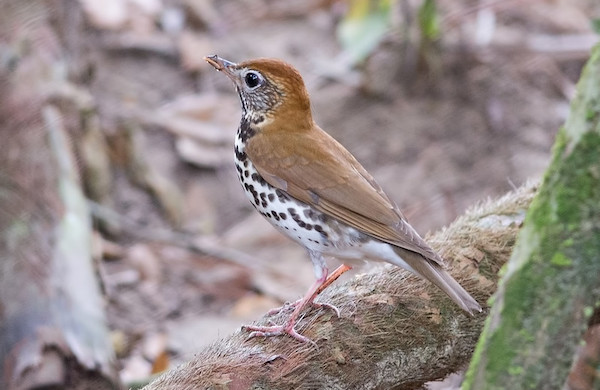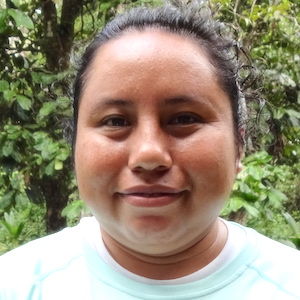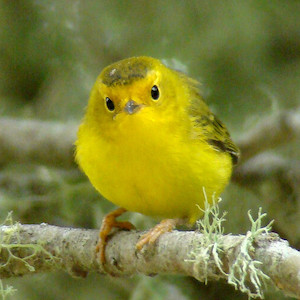Last week IBP's Assistant Director of Demographic Monitoring Programs Steve Albert, along with several colleagues, published a review paper in the journal The Condor: Ornithological Applications summarizing what scientists have learned to date on the habitat ecology of Neotropical migrant birds on their non-breeding grounds. The paper goes on to identify what we still need to learn in order to conserve these species effectively. We talked to Steve a bit about the paper and what we can learn from it.
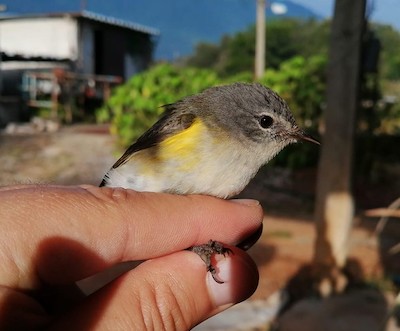
An American Redstart during banding at a MoSI station in the small town of San Rafael Piña in Veracruz, Mexico. Photo by Macario Fernandez.
Why did you write this paper?
There are so many exciting developments in our understanding of the ecology of migratory birds, we thought it was important to summarize some of the latest. The last thorough review we could find was at least 15 years old, and so much has happened since then to widen our understanding. Carryover effects, in which conditions on the wintering grounds affect migration timing and breeding success; molt migration, in which birds leave their breeding areas but stage or molt at other sites before continuing on to other overwintering areas; the impacts of climate change on the timing of life cycle events – these are all huge issues for the conservation of migratory birds that we are still in the early stages of understanding.
What were some of the knowledge gaps and areas for future research identified by this paper?
Some of the studies we highlight in the paper illustrate how by answering one question we come up with a slew of new ones. Relatively simple studies that set out to document migratory movements come up with very surprising results. For example, some species are relatively sedentary on the wintering grounds, while others use multiple wintering sites. Some species segregate by age or sex. Why? What factors in the habitat cause these birds to move around or choose certain areas over others? These are still big questions, which differ across species, that could impact how we think about conserving habitat.
But perhaps the biggest unknown right now has to do with climate change. In a major section of the paper we talk about “phenological mismatch.” Phenology is the study of the timing of different life cycle events. We know climate change is already altering the phenology of resources that migratory birds have relied on for thousands of years during their incredibly arduous journeys: the flowering, fruiting, and seeding of plants, the hatching of insects, etc. Can or will migration timing keep up with these changes? We don’t really know.
How do you think the MAPS and MoSI programs can address some of the knowledge gaps and future directions identified by this paper?
One of the most crucial questions that needs to be addressed in any long-term conservation plan for migratory birds is what stage of the annual cycle drives population change? Is population change driven mainly by processes on the North American breeding grounds, or on the wintering grounds thousands of miles away? Answering that question has huge implications for how you provision your conservation time and effort. The MAPS and MoSI programs were started largely to help provide those answers.
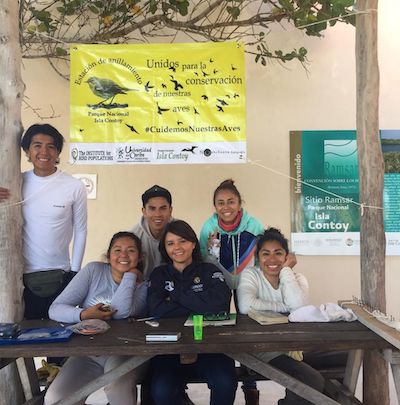
Local High School students at the MoSI banding and monitoring station at Isla Contoy National Park, Yucatán, Mexico. Instructor and station co-founder Marisol Gaytán is standing, far right. Photo by Jonathan Ruben Nochebuena Jaramillo.
Does this paper contain any good news?
Though the overall news for migratory bird populations is not good (pretty steep declines in the last few decades), one encouraging thing I hope came through in the paper is the burgeoning number of really great Latin American scientists working on bird research and conservation. Our colleagues in Mexico, Colombia, Nicaragua, Costa Rica, the Caribbean, and many other parts of the region are doing some very important studies.
Another positive development is the information being gleaned from both technological advancements such a micro-GPS and satellite transmitters, and from the use of eBird and other community science. One of the major findings of all the work being done to track migratory bird movements has been–surprise!–that they are more complicated (and much more interesting) than we thought. This massive amount of information on movements and population trends we’re gathering is starting to clarify things. The big challenge, of course, is translating that information into conservation actions to help birds.
What do you think the take home message of this paper is?
I think the ultimate message of the paper is that we–the conservation community–need to work together with our colleagues through all phases of a migratory species’ annual cycle: breeding, migration/stopover, and wintering. And we are doing that to a large degree, but it’s often easier said than done. Everyone has their own skill sets and priorities, and some of the issues we need to tackle require large, international, multi-governmental effort.
What actions do you hope this paper inspires?
I hope it inspires young conservation scientists both in North America and in the tropics to delve into some of these questions.


